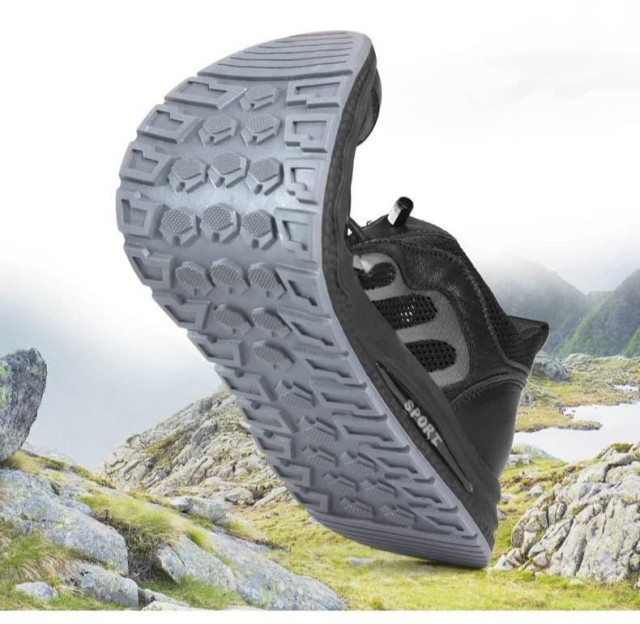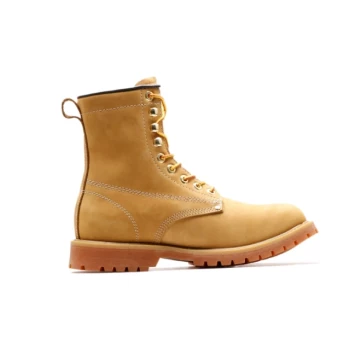The right shoe flexibility isn't just about comfort—it's a biomechanical necessity. Research shows that mismatched flexibility contributes to over 40% of walking-related injuries, from plantar fasciitis to knee strain. This guide reveals how to align shoe bend patterns with your foot's natural motion for injury-free movement.
The Science of Foot Flexibility
Your foot contains 26 bones and 33 joints designed to flex, twist, and absorb impact. Modern footwear often disrupts this intricate system, forcing the foot to conform to artificial movement patterns.
How Rigid Soles Disrupt Natural Motion
- Gait Interference: Stiff soles reduce the foot's ability to roll from heel strike to toe-off, increasing calf muscle strain by approximately 30%
- Impact Transmission: Less flexible materials channel shock directly to knees and hips rather than dispersing it through the foot's arch system
- Toe Spring Problems: Excessively curved toe boxes (common in rigid shoes) keep toes in perpetual extension, weakening intrinsic foot muscles
The Ball-of-Foot Bend: More Than Just Comfort
The critical flexion point should align precisely where your metatarsals meet the phalanges—about two-thirds from the heel. Test this by:
- Holding the shoe heel firmly
- Pushing upward on the toe box
- Observing where the bend occurs
Proper flexion at this point reduces midfoot pressure by nearly half compared to incorrectly bending shoes, according to gait laboratory studies.
Engineering Flexibility
Leading manufacturers like 3515 now use computational gait analysis to design precision flex systems. These innovations go beyond simple sole grooves to address dynamic movement needs.
Decoding Flex Groove Patterns for Different Activities
| Activity Type | Groove Depth | Spacing | Purpose |
|---|---|---|---|
| Urban Walking | 2-3mm | 8-12mm | Multi-directional flexibility for paved surfaces |
| Trail Hiking | 4-5mm | 15-20mm | Deeper traction with controlled lateral stability |
| Recovery Walks | 1-2mm | 5-8mm | Micro-flexibility for post-injury movement |
Material Innovations in Midsole Responsiveness
- Dual-Density EVA: Firmer medial side for overpronators, softer lateral for natural supination
- Rebound Hydrogels: Returns 85-90% of energy during toe-off phase
- Thermo-Adaptive Polymers: Adjust stiffness based on ambient temperature changes
Personalized Flexibility Choices
Your foot's unique characteristics demand tailored solutions. 3515's manufacturing capabilities allow bulk buyers to specify flexibility parameters for different demographic needs.
Matching Shoe Bend Points to Your Foot Arch Profile
- High Arches: Require shoes with 20-30% greater forefoot flexibility to compensate for reduced natural shock absorption
- Flat Feet: Need moderate stiffness with reinforced arch support to prevent excessive inward rolling
- Neutral Arches: Perform best with balanced flexibility—neither too rigid nor overly pliant
Flexibility Adjustments for Aging Feet or Medical Conditions
- Diabetes: Extra-deep flex grooves (4-6mm) reduce shear forces on sensitive tissues
- Arthritis: Segmented outsole pods allow independent movement of stiff joints
- Post-Surgical: Progressive flexibility systems that increase bend gradually during recovery
Experience the 3515 Difference: Our footwear engineering combines biomechanical precision with scalable production solutions. Distributors and brand owners can leverage our flexibility customization options to address specific market needs—from performance walking shoes to therapeutic footwear. Request our technical specifications portfolio to explore how our manufacturing capabilities can enhance your product line's foot health benefits.
The silent revolution in footwear isn't about bold designs or celebrity endorsements—it's happening in the millimeter-perfect flex points that protect your joints with every step. By understanding these principles, bulk buyers can make informed selections that translate to better foot health for end users.
Related Products
- Durable High-Traction Canvas Sneakers Wholesale & Custom Manufacturing
- Durable Goodyear Welt Leather Work Boots for Wholesale & Private Label
- Durable Leather Work Boots Wholesale Manufacturer & Custom Factory
- Wholesale Durable 6-Inch Work Boots | Custom & Private Label Manufacturer
- Wholesale Comfort Dress Shoes with Dial Closure for Custom Manufacturing
Related Articles
- Mastering Business Casual Footwear: How to Choose and Style Sneakers for Workplace Credibility
- How to Choose Rubber-Soled Shoes That Truly Prevent Slips
- How to Choose Business Casual Shoes: Style, Material & Workplace Pairing Strategies
- How Rubber-Soled Shoes Master All Seasons: The Science of Traction and Adaptability
- Blake Stitch vs. Goodyear Welt: Decoding Durability, Repairability, and Ideal Use Cases


















